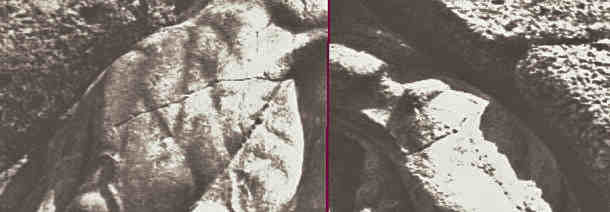
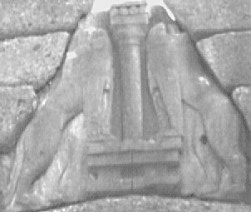
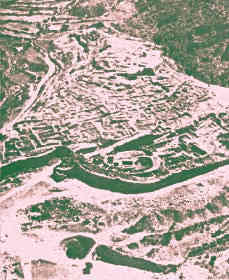
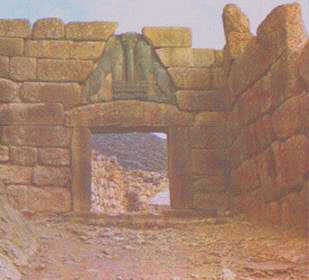
Low on the left ,next to the modern road
, the remains of the rooms and workshops.
with the Gate of the Lions.
| ..in spite of evidences of damages of 3300 years of earthquakes | |
 |
|
| how is it possible that in the course of a "true" action of war, the enemy soldiers, or anyone else, could save just the symbol of the attacked city, especially if the traces of the destructions inside and outside the citadel are considered ? Or perhaps Mycenae was at that time already so decayed , not even deserving this last affront..And, if indeed a true combat happened, perhaps were these "invaders" also , religiously respectful of a symbol (the "pillar", actually), seen in the Middle East also as a representation of a divinity ? |
 |
 |
 |
| View of Mycenae.
Low on the left ,next to the modern road , the remains of the rooms and workshops. |
Entrance to the
citadel
with the Gate of the Lions. |
| First of all we have the certainty of a catastrophe. | |
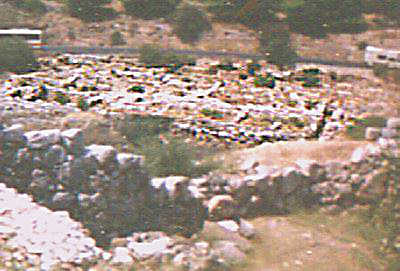 |
The traces of violent distruction by fire of the workshops situated along the road outside the city , in particular the jars of oil , intentionally broken off , in order to use the content as fuel, would testify in favor of the thesis of the invasion or the revolt. In the picture next , the remains of the rooms and workshops (of the Shields, of the Sphinx and the Oil Merchant). |
| View of the workshops from the "cultual" center of the citadel | |
| A
very good description of the possible events and origins
of the decay of mycenaean Civilization is found in the series of Lessons on the Bronze Age in the Aegean ,by Jeremy B. Rutter,Classics Department,Dartmouth College |
|